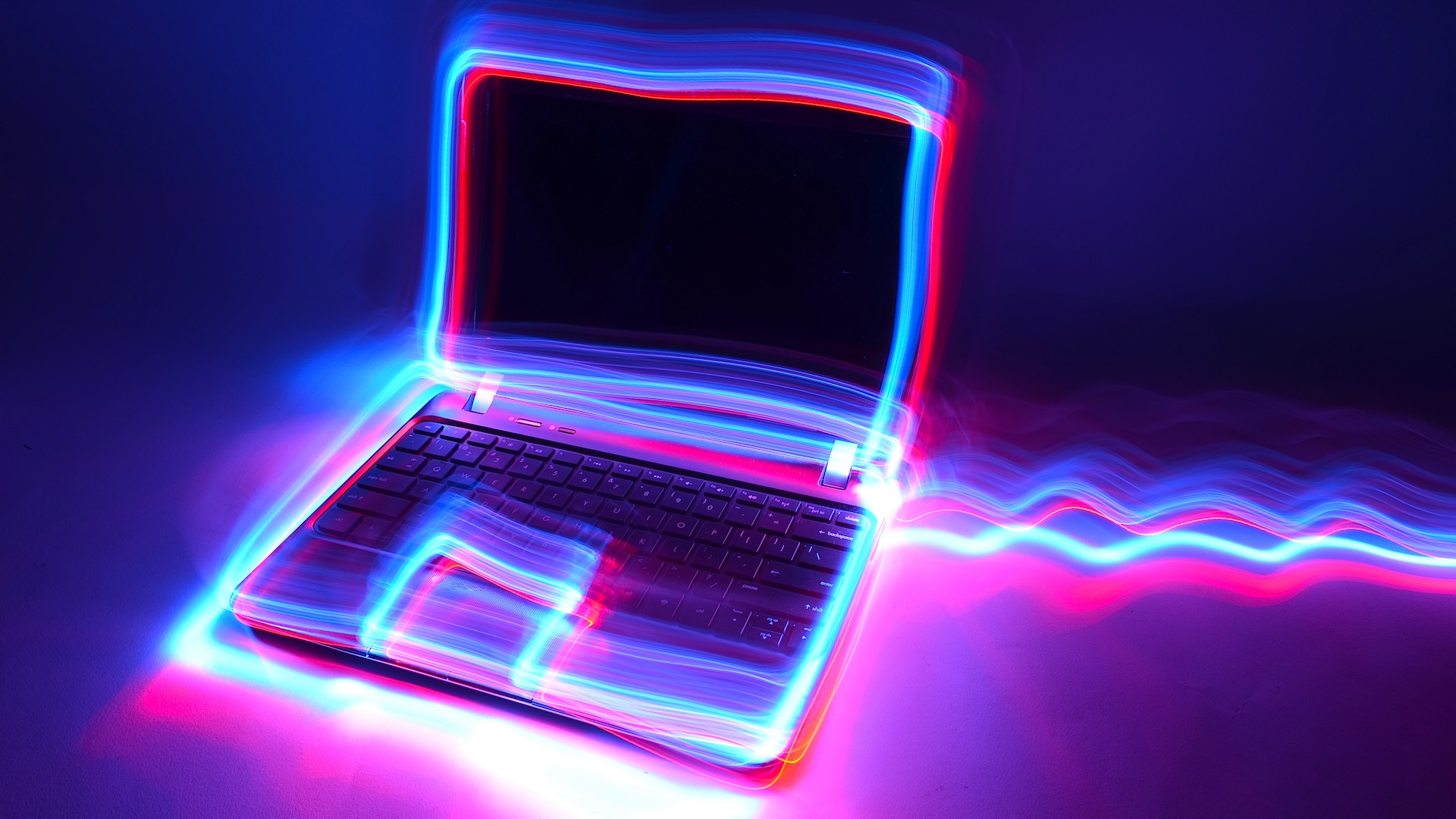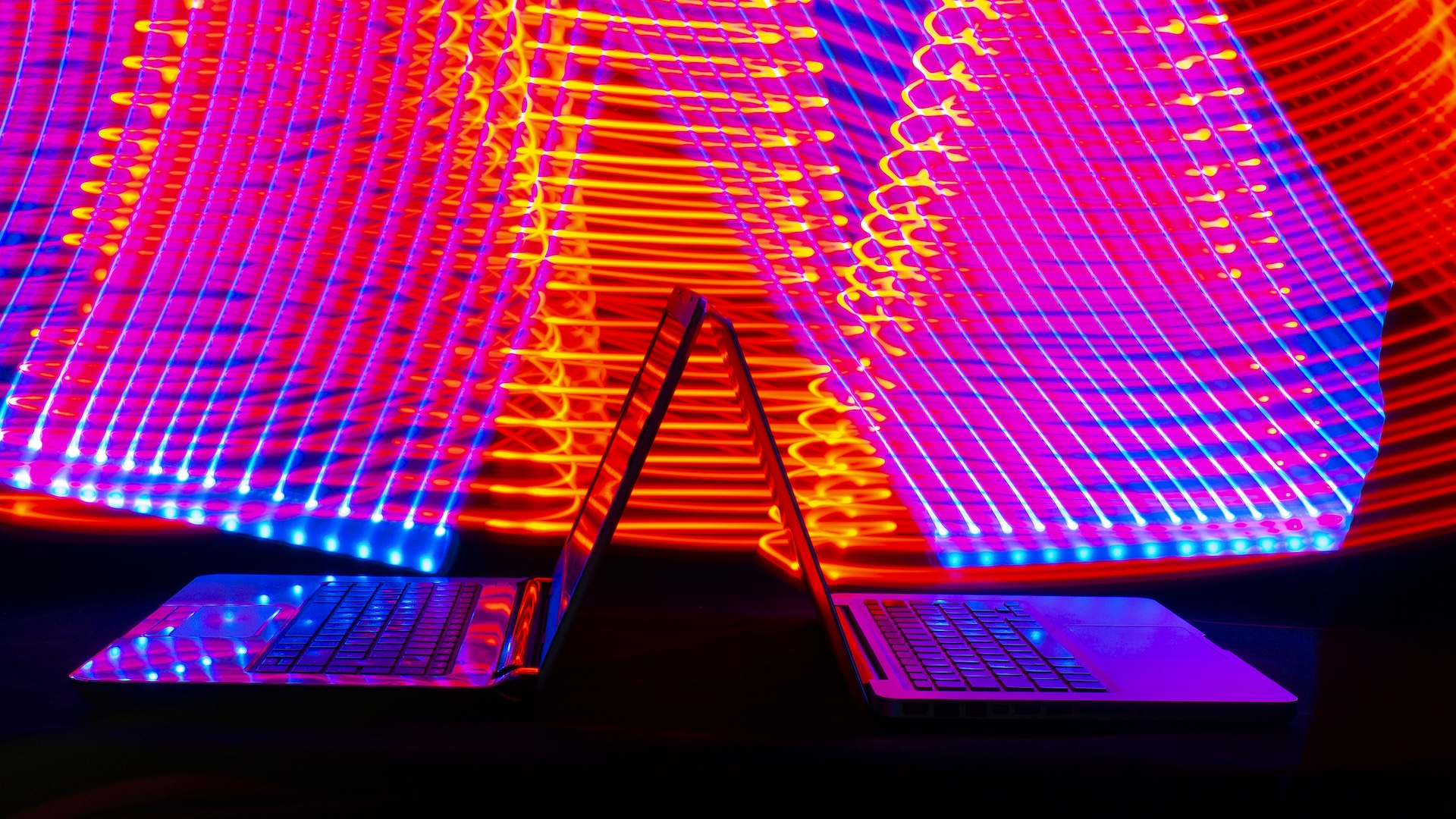
Will we ever have quantum laptops?
Quantum computers are here. But could we ever build a quantum laptop?

Roughly 80 years ago, the world was at war. Under a shroud of secrecy, scientists in the U.K., Germany and the U.S. were creating the first electronic computers. These computers filled rooms, demanded vast quantities of electricity and enabled previously impossible calculations. Few of the people involved could have imagined that decades later, computers orders of magnitude more powerful would fit in a backpack — yet that's exactly what happened.
So, as we sit on the threshold of genuinely useful quantum computing, could we ever see quantum laptops? "I think it's possible," Mario Gely, a quantum computing researcher at the University of Oxford, told Live Science. "It's highly speculative, but I can't think of a fundamental reason why a quantum laptop would not be possible."
Here are some of the steps that will be needed to get there.
Scaling up qubit number
Before scientists can make a quantum laptop, they need to make a useful quantum computer, period. Questions remain over how many qubits — quantum equivalents to digital bits — are needed to create a genuinely useful quantum computer, or one that can solve a range of useful, real-world problems that elude the best superclassical computers. But it's definitely higher than is currently possible.
Stephen Bartlett, a theoretical quantum physicist and director of the University of Sydney's Nano Institute, thinks we could see genuinely useful quantum computers by the end of this decade. "There's a bunch of open scientific challenges, which makes that pathway a bit murky, but we're getting close," Bartlett told Live Science.
Related: What is the largest known prime number?
For instance, newly developed quantum charge-coupled device (QCCD) architecture could be used to make two-dimensional arrays of qubits rather than one-dimensional ones — which would increase the density, and potentially the number, of qubits.
Sign up for the Live Science daily newsletter now
Get the world’s most fascinating discoveries delivered straight to your inbox.
Reducing the errors in quantum computers
But scaling brings another challenge in building a miniature quantum computer: correcting errors, or "noise." "Our existing quantum components are noisy, so we need error correction, and that necessitates a large amount of redundancy," Bartlett said. Scientists need to either reduce errors or build error correction into quantum computers, and that requires even more qubits. Many scientists are trying to solve this problem.
For example, a December 2023 study tried to reduce errors by building a quantum computer with "logical qubits." In another paper, published in April 2024, scientists designed a new type of qubit that behaved like an error-correcting logical qubit. Some scientists have even proposed using photons (light particles) as qubits, including another study that used a laser pulse. According to Peter van Loock, a professor of theoretical quantum optics at Johannes Gutenberg University of Mainz in Germany and co-author of the study, this approach has an "inherent capacity to correct errors".
So if, within a decade or two, powerful and useful quantum computers exist, the next step would be miniaturization.

Choosing different types of qubits
But to get really small, quantum computers may need to focus on a different type of qubit than is currently popular. Some of the most advanced quantum computers today — such as those made by IBM and Google — rely on quantum processing units filled with superconducting qubits. But the first quantum laptop probably won't use this technology.
That's because, by their nature, superconducting qubits must be cooled to a fraction above absolute zero — around 20 millikelvin — and that requires filling a room with dilution refrigerators. And companies like IBM aren't trying to get around this size constraint. For example, IBM's current quantum computing roadmap sets out goals that include a 2,000-qubit quantum computer by 2033 — which would fill many rooms rather than one.
Quantum laptops may instead rely on trapped ion qubits, charged particles that exist in multiple states at once and that are suspended using electromagnetic fields, Bartlett and Gely explained. Although trapped ion systems work at room temperature and don't rely on room-sized refrigerators, the lasers they use are gigantic.
"At the moment, our laser system occupies approximately a cubic meter [35 cubic feet]," Gely said. "If we assume that ion traps are the future, then we need the lasers to become smaller."
And lasers must not only shrink but also become more advanced. Current systems are geared to constrain 100 ions. "How many qubits you can control with this volume of laser equipment is unclear," Gely said. "You can control more qubits than we have today, but certainly not the millions of qubits of a fully fledged quantum computer."
However, two recent advances could help with miniaturization. First, future QCCDs could aid miniaturization by increasing qubit density. Second, in July, Stanford researchers created titanium-sapphire lasers that are 10,000 times smaller than the ones they replace.
Related: How does a secure phone line work?
Miniaturization efforts will ramp up
Right now, scientists are focused on making quantum computers more powerful, not on shrinking them. "The drive for miniaturization is not as strong at the moment as the drive for performance, and that mimics the early days of conventional computers when we had mainframes," Bartlett said. "People thought of the most powerful computers as taking up a building. And you know, why would anyone seriously consider carrying one around in your backpack?"
The history of computers suggests quantum computers will roll out first for industrial, military and government applications before shifting to consumers. The apocryphal 1943 quote from Thomas Watson Sr. that there would be a "world market for maybe five computers" springs to mind.
Of course, the world market for PCs and laptops is immense, so could there ever be a similar explosion of demand for quantum PCs and laptops? "The question I always get in my quantum computing classes is, you know, 'When can I play Doom on a quantum computer?'" Bartlett said. "But why would you want to when you can play Doom perfectly well on your computer today?"
Instead, Bartlett suggested there might be "quantum personal apps like finance or something niche around information security" — but the truth is, nobody knows. Gely made the alternative suggestion of a quantum processor sitting alongside a classical processor. "It could be like you have a graphics card, but it would only be useful for certain tasks," Gely said.
It's not yet clear that quantum laptops would be useful for consumers. What experts can say with a high level of confidence is that all of the hardware obstacles — scaling the number of qubits, correcting errors cand miniaturizing components — can be overcome. And yet, a future quantum laptop probably won't play Doom.
Tim Danton is a journalist and editor who has been covering technology and innovation since 1999. He is currently the editor-in-chief of PC Pro, one of the U.K.'s leading technology magazines, and is the author of a computing history book called The Computers That Made Britain. He is currently working on a follow-up book that covers the very earliest computers, including The ENIAC. His work has also appeared in The Guardian, Which? and The Sunday Times. He lives in Buckinghamshire, U.K.










